Poodle vs Labradoodle Comparison (with Photos!)
Labradoodles and Poodles are the most desirable dog breeds at the moment, so many people wish to own one.
If you’re caught up in the Poodle vs. Labradoodle debate, you are probably looking for a non-shedding companion. But choosing between two of the most famous dog breeds can be torturous. Despite their similarities in names and traits, they are still very different.
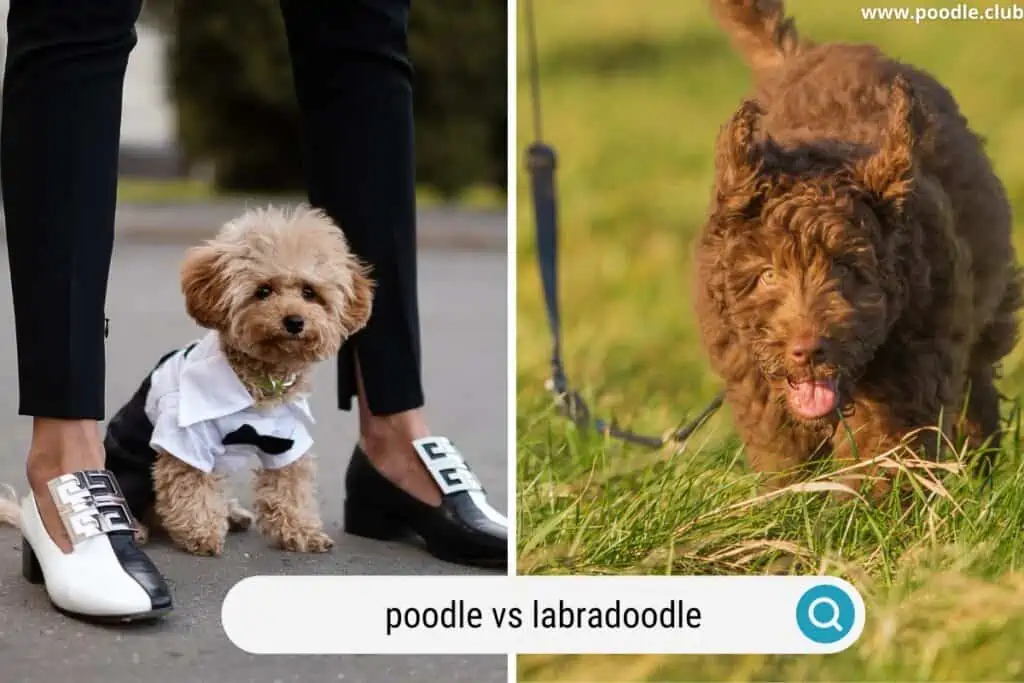
Before you decide which one to get, you want to ensure that the breed is a good match for both you and your lifestyle. Try not to make a mistake and bring home a breed that will not match your lifestyle and personality and vice versa.
To make your search easier, we have put together a detailed comparison of these two breeds to help you decide which one of them is best for you. Let’s get started.
Breed History
Labradoodle
Sir Donald Campbell first used the term “Labradoodle“ in 1955 in his book, as he owned one.
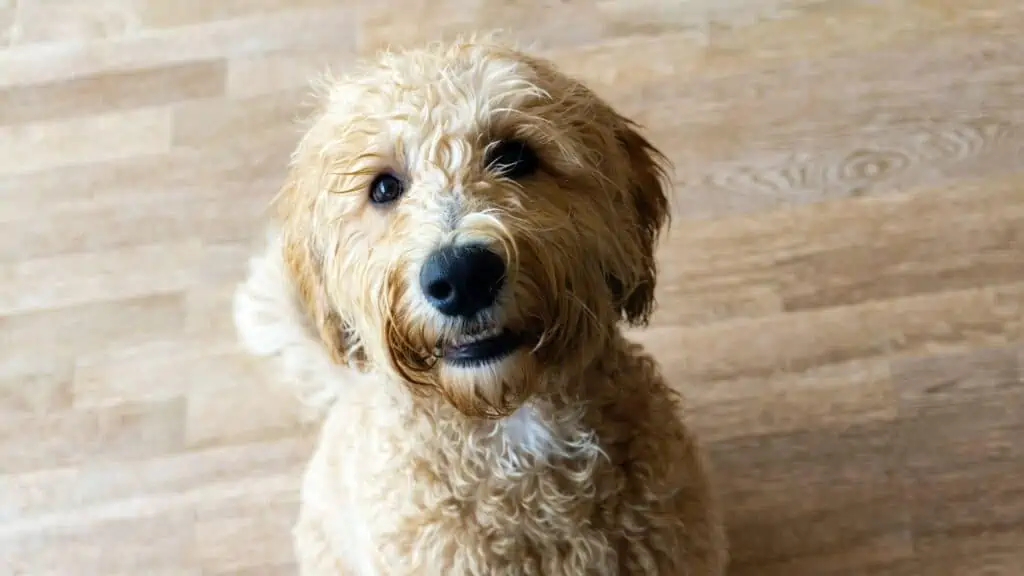
Later, in 1989, an Australian breeder, Wally Conron, responded to a couple’s request for a non-allergic guide dog. The wife was visually impaired, but the man suffered allergies. The Labradoodle became famous as a result.
The Royal Guide Dog Association of Australia learned about the breed, which increased its popularity.
PuppySpot is a reputable dog marketplace where you can browse and find compatible puppies right from the comfort of your home. They have placed over 200,000 puppies into homes in the US!
Poodle
Poodle, also called Pudel in German and Caniche in French, was bred as a water dog.
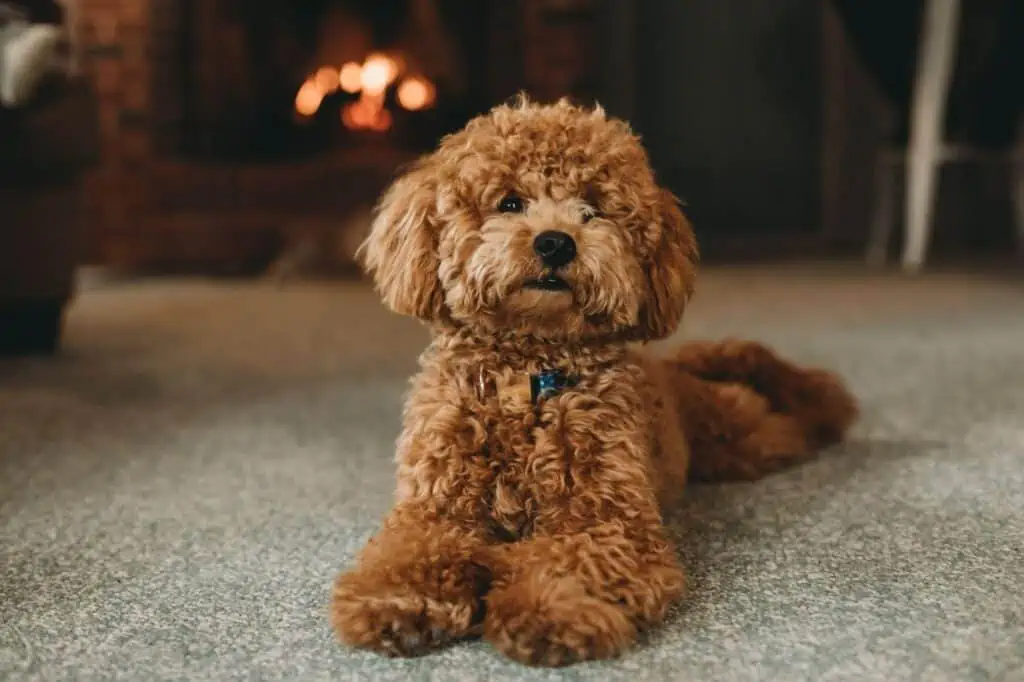
With its origin in Germany in the middle ages, the Poodle was created as an alternative to the English Water Spaniel.
While no one knows about the origin and exact time when the Poodle first came to be, some documents date back to as early as the 14th century in Europe. People later brought the people to America in the late 17th century. The AKC (American Kennel Club) officially recognized it as one of the first registered dog breeds in 1887.
While today, you can find three variations of Poodles—Miniature, Standard, and Toy—the Standard Poodle was the favorite dog of royalty and upperclassmen.
Among the royalty were King Louis XIV and King Louis XVI, the last kings of France before the destruction of the monarchy. During this period, the Poodle became France’s national dog, earning the name “French Poodle.“
Intelligence
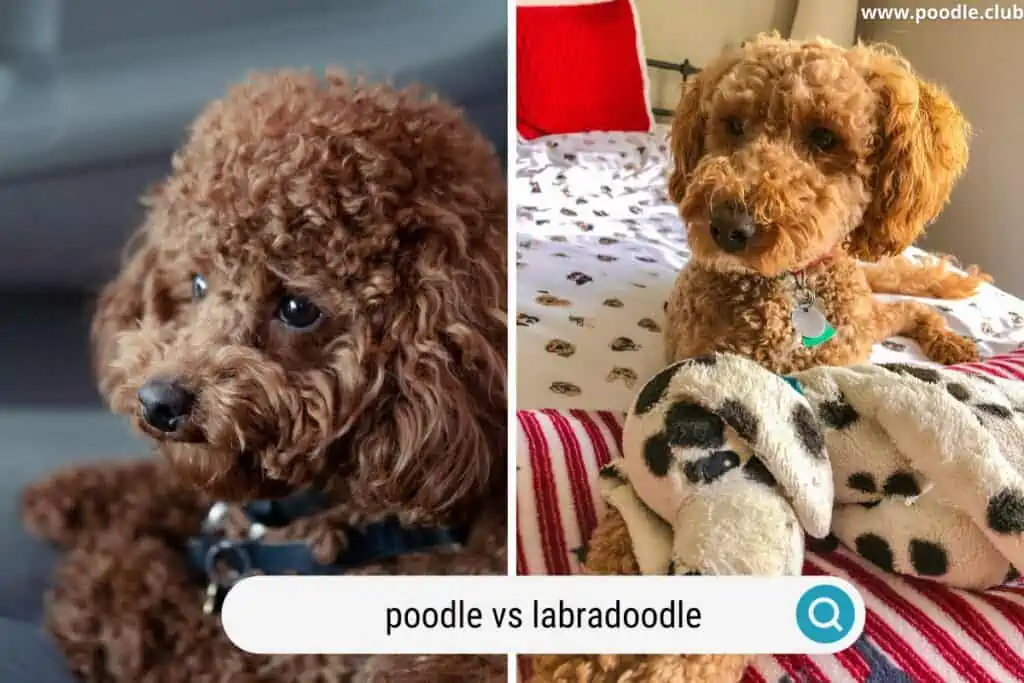
Labradoodle
Even though Labradoodle is mainly famous for its looks and cuteness, it is among the most intelligent dog breeds. Some of this intelligence is likely due to its parents. Both the Labrador and the Poodle rank among the top ten dog breeds for intelligence and obedience.
During the dog IQ trial a few decades ago, Labradoodle was ranked 7th as the most intelligent dog breed. The criteria, which focus on the number of repetitions for dogs to learn a new command and the rate at which they obey those commands, indicated that the Labradoodle took only five repetitions to learn a new command.
Poodle
Taking obedience and work IQ scores into account, the Poodle is the 2nd smartest breed of dog, according to a study by canine psychologist Stanley Coren. Additionally, this study showed that Poodles are exceptional at learning from PT experiences and have high adaptive intelligence.
Another characteristic that sets the Poodle apart from most other dog breeds is its ability to remember 300 words or more, unlike other animals who could remember only 165. Besides this, the Poodle tops the list of dogs that can understand human gestures, such as verbal tone and body language.
Life Expectancy

Labradoodle
Labradoodles generally live between 12 and 14 years without experiencing any health problems. Furthermore, the lifespan also depends on the dog’s Poodle parent because Poodles come in three different sizes.
Labradoodles typically live longer than most other large-sized breeds. In addition, since both Poodles and Labradors are generally healthy dogs, the hybrid Labradoodle is less likely to inherit particular genetic flaws from either parent breed.
Poodle
Size plays an important role in the lifespan of a Poodle. Each of the three varieties of Poodles that the American Kennel Club recognizes has a different lifespan.
Standard Poodle: A Standard Poodle’s average lifespan is 12 years, with some reaching 13 or 14 years.
Miniature Poodle: The life expectancy of Miniature Poodles is roughly 14 to 17 years, giving them an advantage over larger dogs since smaller dogs tend to live longer.
Toy Poodle: Toy Poodles live the longest of all breeds, with a lifespan of approximately 16 years and a range of 14 to 18 years. You can even prolong their lifespan if you care for them well.
Appearance

Labradoodle
Standard adult Labradoodles grow to a height of 21 to 24 inches and weigh 50 to 65 pounds. Medium Labradoodles stand at an adult height of 18 to 20 inches and weigh 30 to 45 pounds.
Poodle
Poodles come in three different sizes.
- The average Poodle is over 15 inches tall and weighs between 40 and 70 pounds.
- The height of a Miniature Poodle is between 10 and 15 inches, and they weigh between 10 and 15 pounds.
- The height of a Toy Poodle is under 10 inches, and its weight is between 4 pounds and 6 pounds.
Coats

Poodle
Poodles are known for their hypoallergenic and non-shedding coats with a curly, single-layer growth pattern. For these reasons, the Poodle has become a favorite parent breed for many designer breeds.
Poodle pups have a different coat than adults since it develops into waves or curls. This texture starts to change from about 9 to 16 months and will begin to mat easily. This will result in the Poodle’s hair becoming more coarse.
Poodle coats are naturally curly, unlike those of other dogs. A Poodle’s curly and dense hair continues to grow until you clip it. This can also give you the impression that your dog’s hair isn’t shedding.
However, the hair that sheds gets tangled in the curls. For this reason, you need to brush your Poodle regularly.
Labradoodle
Labradoodle can sometimes inherit a similar coat from their Poodle parent, although this isn’t always true. As with any designer breed, the offspring breed can have different features than their parents.
Labradoodle has three main coat types that vary in feel and look.
Straight Coat
This coat is reminiscent of the Labrador breed the Poodle descends from. This type of Labradoodle has a ragged appearance.
It’s important to remember that no Labradoodle is born with a significant coat; the coat emerges at 12 weeks. Labradoodles with straight coats do not have fluffy teddy appearances like those with curly hair.
Shaggy Coat
This is the most common coat type in Labradoodles and is the easiest to maintain. Soft to touch with wavy curls, you need to brush out this coat at least once a week.
This coat is the best if you’re looking for a dog with little shedding and a typical Labradoodle look.
Curly Coat
The curly coat is the second most common coat type, and it varies in tightness depending on the individual dog’s genetics. Compared to other coat types, this coat requires daily grooming or shortening, making it easier to maintain.
Temperament

Labradoodle
Temperament is one thing that largely depends on how you raise the dog. Unfortunately, due to its increasing popularity, many inexperienced and unethical breeders are breeding the dog without raising it right.
If you care for it well, this breed develops an amiable and affectionate personality, making them the best choice for a family dog. Often stubborn, this breed is famed for its clever and witty behavior.
This breed may develop temperament problems if you do not socialize them early. Introducing them to other animals and humans early on can prevent the development of an introverted and reclusive personality in this dog.
Poodle
Known mainly for its intelligence and ease of training, Poodle is currently the most favored family dog breed.
If you own a Poodle, you must be familiar with how much they crave attention. If you ignore them, they may even display negative behaviors, such as excessive barking. Additionally, Miniature Poodles can become aggressive when an unknown person approaches them.
This is natural, as Poodles were first bred as hunting dogs. However, with time and training, they have become excellent companions. For these reasons, early socialization and training are essential for this breed.
Training
Labradoodle
The Labradoodle is quite friendly and gets along with people and pets alike. First, however, you must ensure you teach them how to be sociable. Early socialization with other dogs is crucial for the development of a dog’s social skills.
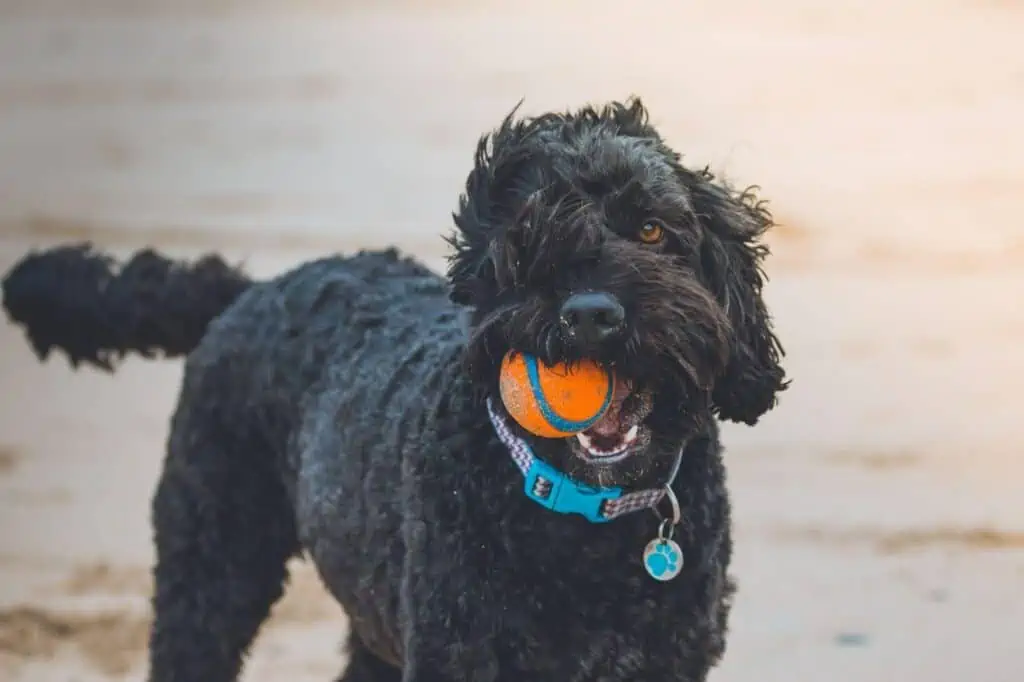
Labradoodles have characteristics of two distinct breeds, which can be beneficial but can also make it difficult to teach them as they age. In addition, due to their high energy levels, Labradoodles are prone to developing lousy behaviors that can be hard to undo if you do not adequately train them.
Poodle
Generally, Poodles are bright, athletic dogs who are always ready to play. They also enjoy learning about new things.
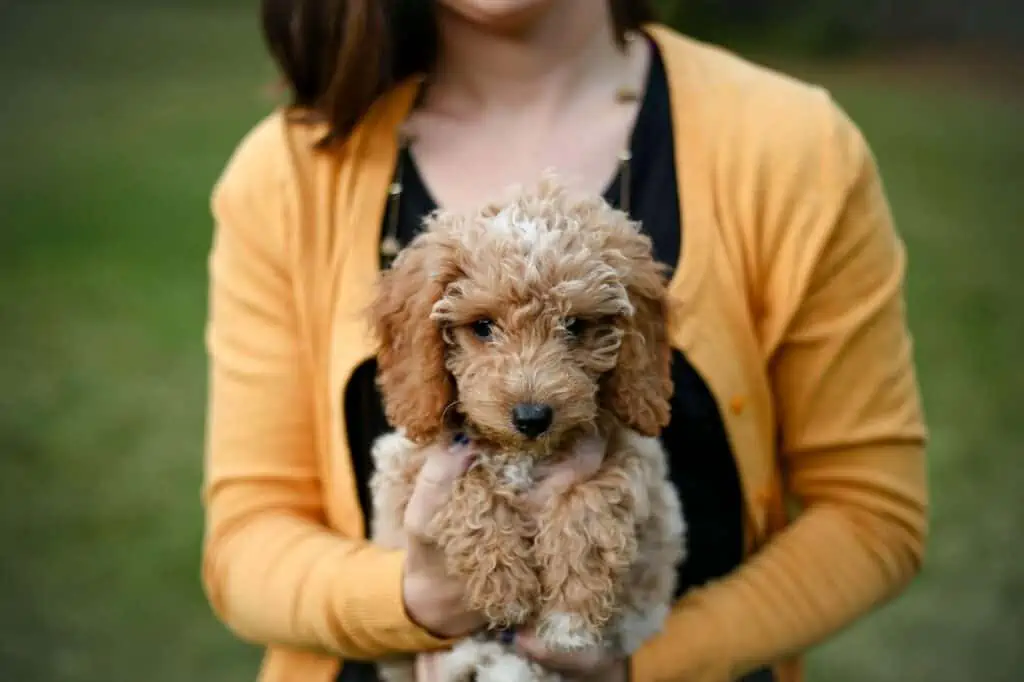
They are easier to train when around other people than when they are alone. It can be challenging to crate train a Poodle because of this, but you could try using a suitable dog cage for the purpose.
Poodles learn quickly yet may become bored easily, so keep training sessions fun and enjoyable.
Health
Labradoodle
All hybrid dogs, like purebred dogs, may acquire hereditary health concerns. To minimize the health risk, you should ask the breeder you are getting your dog from for its health record.
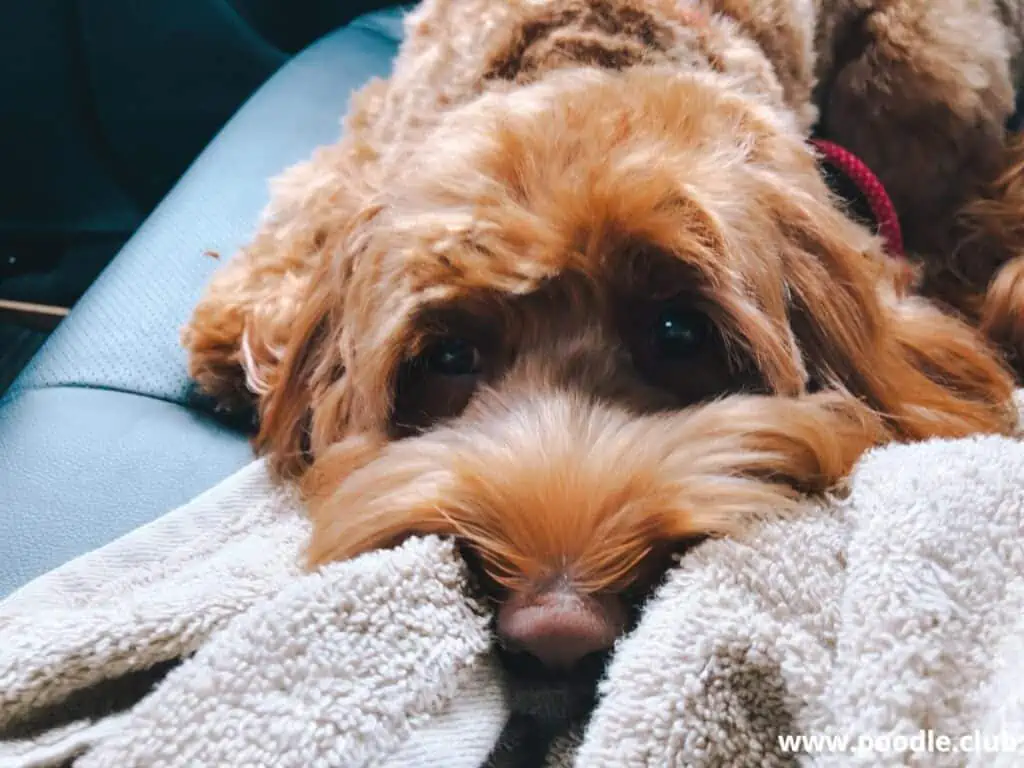
Ensure you receive proof of OFA hip and elbow certifications. Also, check for a DNA test for progressive retinal atrophy. A Canine Eye Registry Foundation certification will confirm that the eyes are healthy.
Occasionally, Labradoodles develop the same health conditions as Labrador Retrievers or Poodles. Among them are hip and elbow dysplasia, progressive retinal atrophy, and von Willebrand’s disease, a bleeding disorder.
Poodle
Poodles (Standard, Toy, and Miniature) have a long life expectancy due to their small size. But this doesn’t make them any less prone to disease than any other breed.

Poodles are prone to many health problems such as hip dysplasia, epilepsy, Addison’s disease, thyroid, progressive retinal degeneration, and hypoglycemia. They may also encounter other health problems, including bloat, insulinoma, hemangiosarcoma, and collapsed trachea.
Poodles and Labradoodles are both healthy dogs in most circumstances; nonetheless, Labradoodles are the healthier breed out of the two.
Grooming
Labradoodle
Due to their Poodle genetics, most Labradoodles are hypoallergenic and non-shedding. However, owning a non-shedding Labradoodle has its disadvantages.

The fact that Labradoodles don’t shed doesn’t mean they don’t shed at all. What it means is that whatever they shed stays in their hair, so they need constant grooming since their hair doesn’t fall off.
Poodle
Due to their thick coats, Poodles require a lot of attention to stay free of mats and knots.

Grooming is vital for the health of a Poodle and the appearance of its fluffy coat. Make sure you have the time and resources to learn how to groom a Poodle. And if you cannot manage your time, it is highly recommended that you take your Poodle for professional grooming every 3 to 6 weeks.
Price
Labradoodle
Labradoodles are currently in high demand, and their popularity has resulted in a price hike. In the UK, a Labradoodle will cost a minimum of £600 and can go over £1,500.

The same Labradoodle can cost as little as $500 or as much as $4000, depending on where you buy it from.
Poodle
For a healthy Poodle in the United States, reputable breeders will charge between $500 and $2000.

The cost of a Poodle in the UK begins at £500 and can reach as high as $2000.
Final Thoughts
When you welcome a new member into your family, like a pet, learning everything about them beforehand can make the transition and accommodation easier. You should not turn your back on bad qualities while on the hunt for good qualities.
No matter the breed, you will need to accept both the good and bad, to create a lasting bond with your companion.
No matter how different they are, both Poodles and Labradoodles are wonderful, family-friendly dogs. After analyzing their similarities and differences, you can pick the right dog for you and your family.
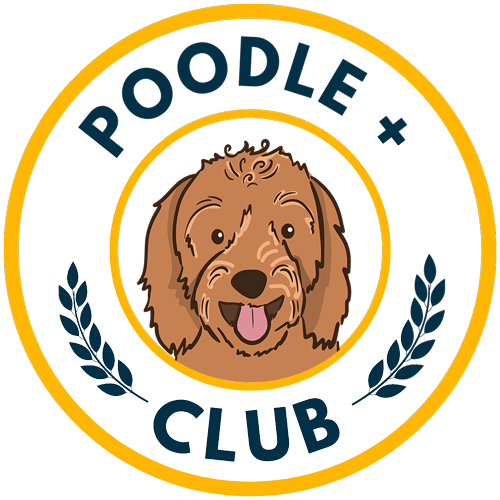


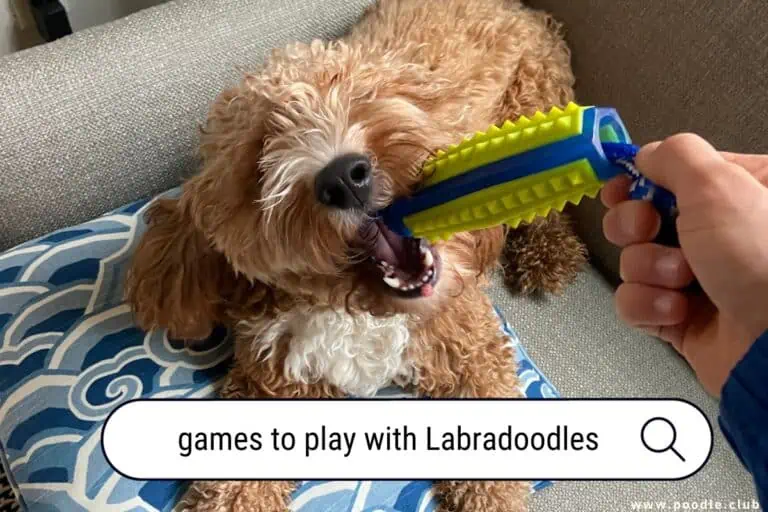
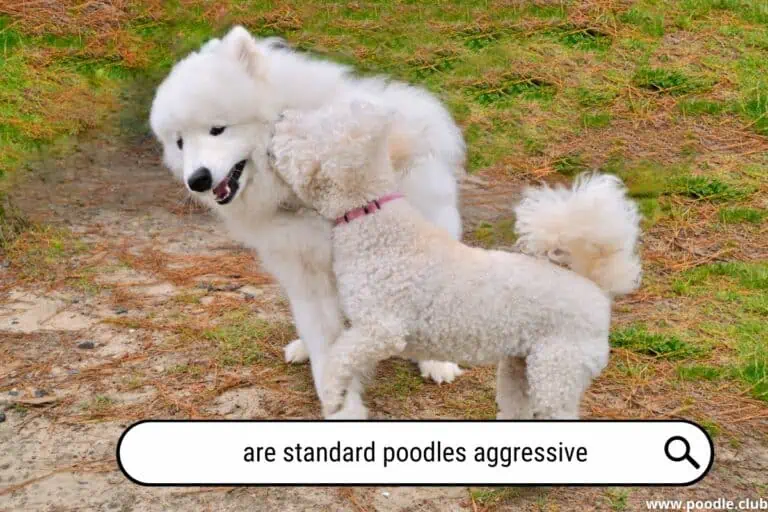


![Labradoodle Bite Force [Stats] Exploring the Strength of their Jaws](https://poodle.club/wp-content/uploads/2023/11/labradoodle-bite-force-768x512.webp)